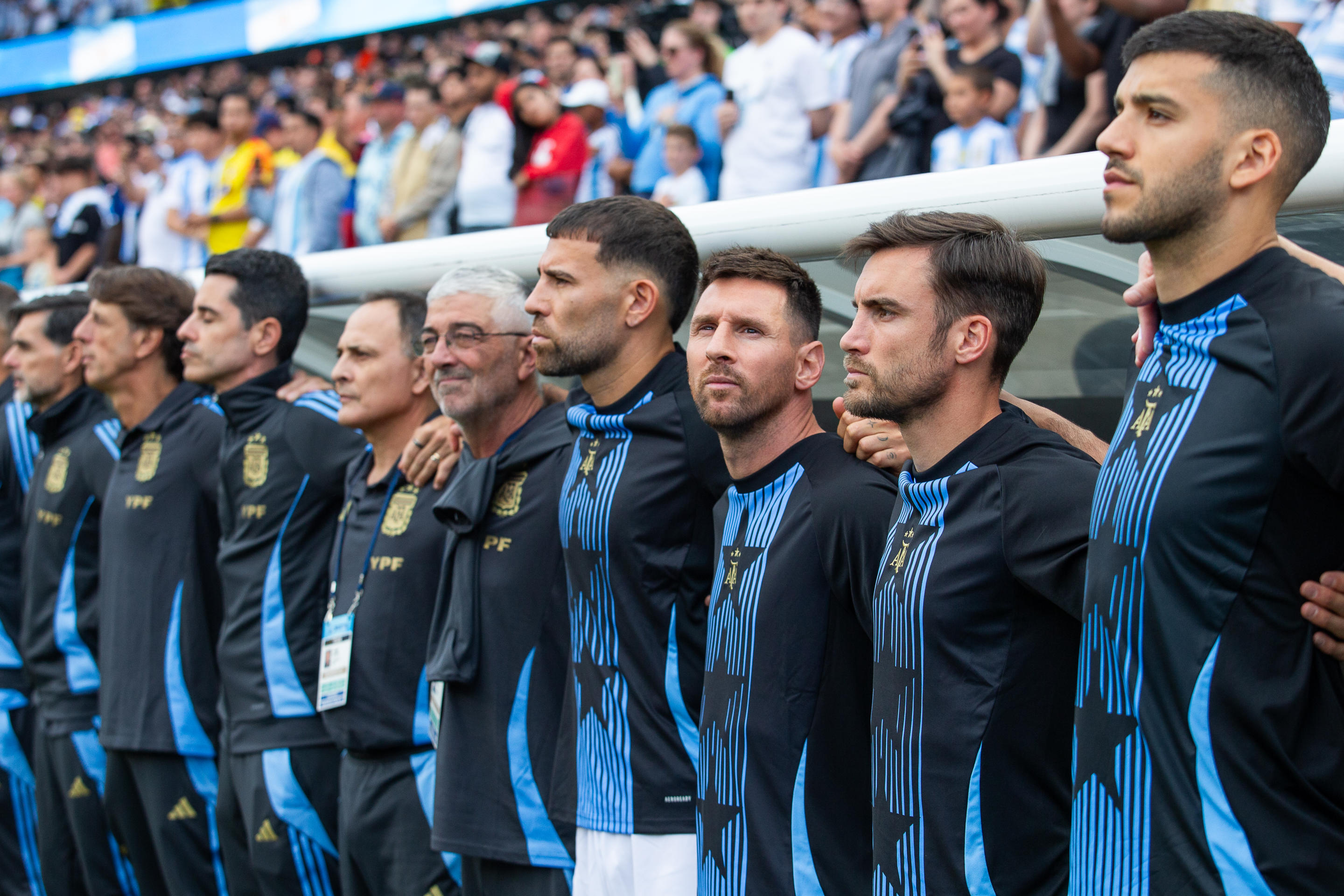The 2024 Copa América – a mini-World Cup for the Western Hemisphere – begins on Thursday in the United States. It will stretch from coast to coast, attracting television audiences across the Americas. It will feature megastars, like Lionel Messi, as well as a vibrant array of Latino style.
But one of the central questions is: will the host country’s casual fans care?
Millions of Americans of Mexican and Colombian origin, Americans of Argentinian and Venezuelan origin, will burst into joy for the Copa América. As many of them know, it is undoubtedly the most competitive international men’s football tournament between the four years between the World Cups.
But the Copa América 2024, in particular, is a novelty in a country that knows little about it.
So here is an attempt to familiarize you with the basics, stories, issues and driving forces behind this one-of-a-kind event.


What is the Copa América?
The Copa América is the South American men’s football championship, a century-old competition between the continent’s 10 national teams (and often others).
Its cadence, size and format have varied over the years. It is now a quadrennial tournament, much like the European Championship (Euros), played in even summers between the men’s World Cups.
It usually includes 12 teams, including two invited from other continents. But in 2024, this number will be temporarily expanded to 16. More on this below.
Is the Copa América a big deal?
In South America, perhaps the most football-loving continent on the planet, this is a huge deal. It’s historic, prestigious, anticipated, hotly contested and festive. For years, it was massive enough to crush Messi – before finally releasing him in 2021.
Outside of the Americas, this is a little less the case. Its global footprint is dwarfed by its European equivalent, the euro. However, this is largely due to the economic power of Western Europe – and their willingness/eagerness to commercialize and commercialize the sport.
Basically, the two tournaments are comparable. It’s the biggest football outside of the World Cup – the hardest to win, the most lucrative, the most acclaimed. And this year’s Copa América, in some ways, is even bigger.
How and why is this Copa América different? And who is in it?
Having difficulty finding a satisfactory South American host, CONMEBOL – the 10-member South American football confederation – struck a deal with CONCACAF, its North and Central American counterpart.
CONCACAF would help organize the 2024 edition in the United States; in return, he would get six spots in a field of 16 teams.
Thus, the men’s national teams of the United States, Mexico, Canada, Panama, Costa Rica and Jamaica will join the 10 traditional participants: Argentina, Brazil, Colombia, Uruguay, Paraguay, Chile, Peru, Ecuador, Venezuela and Bolivia.


Who are the contenders to win it?
Argentina is the favorite. We’ve ranked all 16 teams here.
Wait, so why is the 2024 Copa América taking place in the United States?
Copa América hosting duties generally vary between South American countries – from 1989 to 2011, for example, each of CONMEBOL’s 10 members hosted once.
In recent years, however, the COVID-19 pandemic and instability have disrupted the rotation and left organizers scrambling to find replacements — first Brazil, and now the United States.
In 2024, it would be Ecuador’s turn. But Ecuador, citing security and infrastructure concerns, has abdicated this responsibility. “We are not ready to organize the Copa América,” declared Francisco Egas, president of its football federation, in November 2022. Thus, with less than two years to go, CONMEBOL did not know where its 2024 championship would be played. .
Brazil, its largest, richest and most competent representative, seemed willing and able to welcome. But Brazil had also hosted the two previous Copa Américas – the first in 2019, in line with the standard rotation; then in 2021, when Colombia and Argentina withdrew at the last minute.
So, driven by necessity but also driven by financial and political advantages, CONMEBOL leaders turned to the states. Conversations accelerated during the 2022 World Cup in Qatar. An agreement was reached and announced in early 2023.
Hasn’t there already been a Copa América in the United States?
Yes, but this one was even newer. It was a unique edition of the “Centenario” in 2016. It was not moved in the USA ; rather, it was essentially created by the U.S. Soccer Federation, in partnership with CONMEBOL, a year after the regularly scheduled 2015 Copa América, to obtain money and an opportunity to pit the U.S. men’s national team against elite opponents.
But in practice, the 2016 and 2024 tournaments will be very similar. Same format; six from the same host cities; 15 of the same 16 teams.
How did this 2016 Copa América Centenario go?
It was quite successful. On the field, Chile beat Argentina in a glamorous but brutal final at MetLife Stadium in New Jersey. In the stands, 1.48 million tickets were sold, an average of around 46,000 per match. In total, the event generated a “one-time profit of approximately $80 million” for US Soccer, its vice president at the time, Carlos Cordeiro, said a few years later.
Are fans excited for the 2024 Copa América?
It’s a complicated question.
In South America, fans are still excited about the Copa América, but some are unhappy that their crown jewel has once again been shipped to North America.
In North America, those who understand the gravity and importance of the tournament seem excited; but many non-Latinos in and around the American soccer community feel the tournament has been poorly promoted and may fail to break through on a crowded American sports scene.
CONMEBOL commercial chief Juan Emilio Roa told Yahoo Sports that around 25-30% of fans attending matches would come from South America; most others will be U.S. residents.
How are tickets sold for the Copa América?
Roa told Yahoo Sports on June 7 that just over a million tickets had been sold, or just over 31,000 per game. That’s about 50% capacity for all games, most of which will be played in NFL stadiums.
Naturally, matches featuring teams like Argentina and Mexico are almost sold out or already sold out; others, however, might be rather empty.


How can I buy Copa América tickets?
By going to the CONMEBOL website, finding the stadium or match of your choice and paying generously.
One of the reasons around 50% of tickets go unclaimed is that the prices are, for many, obscene. A single ticket to Argentina’s opening match against Canada, in the penultimate row at Mercedes-Benz Stadium in Atlanta, costs $307 as of this writing. Even for Peru-Chile at AT&T Stadium in Arlington, Texas, the next day, a standard 200-level ticket costs $208. The average ticket price for the entire tournament, according to Vivid Seats, is $283.
Why are tickets so expensive?
It’s unclear who exactly is responsible for these obscene prices.
Roa confirmed that they are based on the “dynamic pricing” model often used by US ticket brokers such as Ticketmaster and SeatGeek.
For a standard Copa América in South America, CONMEBOL would have complete control over every aspect of the matchday experience, including ticketing. But here they had to work with a variety of interested (and capitalist) parties, stadium by stadium, city by city. Rather than selling tickets on a single platform, they’ve essentially delegated this task to each site – some of which use Ticketmaster, others of which use SeatGeek.
The complexity and somewhat last-minute nature of all these arrangements were challenging and were likely the reason why tickets did not go on sale until late February.
When and where do the games take place?
They are scattered across the United States, in 14 different cities, each hosting no more than three games.
The full program is here. A Copa América schedule can be downloaded here.
So, will the Copa América be fun and successful?
Some matches, especially in the round of 16, should be great. Others, between proud but lesser teams stuck in cavernous NFL stadiums, will feel a little soulless.
The tournament as a whole will likely struggle to differentiate itself from all the other high-level soccer played in the United States this decade. But for CONMEBOL, financially, it will almost surely be a success.
“The North American market is an incredible market, in every way: in terms of audience, in terms of sponsorship, in terms of exposure,” Roa said. The inclusion of the Mexican national team likely allowed CONMEBOL to raise several million additional dollars.
“And of course the fact that Argentina and Leo Messi are playing in this Copa America… has increased the interest around the world,” Roa added.
“We have received calls, emails and contacts through our (sales) agency, directly to CONMEBOL, from all over the world, like never before, like never before,” Roa said. “Because, obviously, they have interests in the United States. And everything that happens in the United States takes on another dimension.